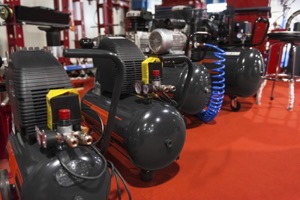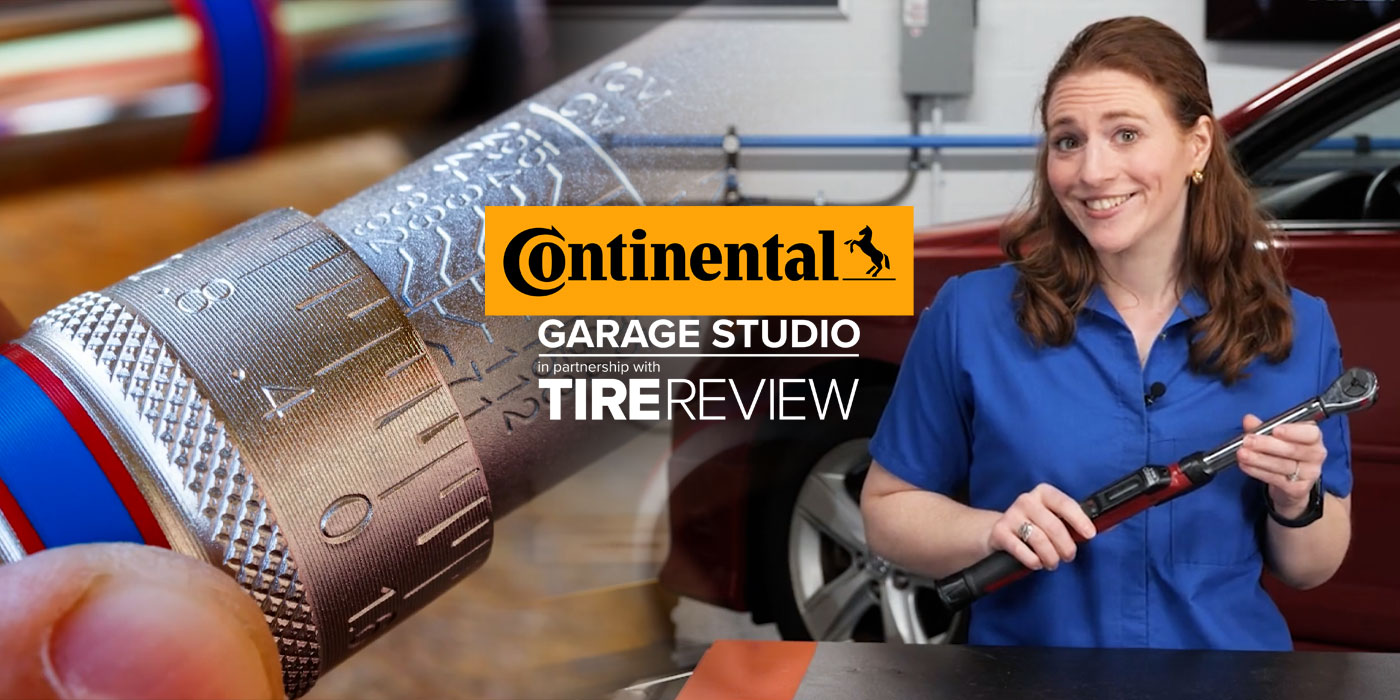Compressed air is the energy source for most shop equipment and many tools. Inadequate airflow or pressure interrupts work flow just like an electric power outage would. Here’s some advice for choosing and maintaining your compressed air system.
Pressure Pitfalls
Avoid a common pitfall – don’t over-pressurize. Very few tools require pressures above 100 psig. Many shop owners ask for high pressure because they’re most familiar with piston compressors, which operate on a wide pressure band to allow the unit to shut down and cool. Another reason for operating at unnecessarily high pressures is that it provides additional storage. This is true to an extent, but keep in mind that compressors generally produce less volume at higher pressures and that leak losses increase with pressure. Refer to the tool manufacturer’s manual to determine your shop’s exact pressure and flow requirements.
Flow Requirements
Compressor size isn’t determined by pressure requirements. It’s determined by the compressor’s output capacity in cubic feet per minute (cfm). To properly size your compressor, you need to know how much air is needed in terms of volume, not pressure. Some tool and compressor manufacturers publish charts with air consumption rates. Adding all of these together for the tools you use yields the total potential flow requirements. But it doesn’t take into account the percentage of time each tool is used. This requires some analysis of how the different parts of your shop operate throughout the day. Electronic data logging devices are a convenient way to measure and record compressor usage.
Compressor Type
A piston compressor may provide adequate flow for a short period, but its allowable duty cycle must be considered. The duty cycle is the percentage of time a compressor operates without the risk of overheating and causing excessive wear to the compressor. Most small shop piston compressors are air-cooled and have an allowable duty cycle of 60-70%. For this reason, they’re often oversized and operate over a wide pressure band to allow the compressor to frequently shut down and cool off because of the relatively high operating temperatures (often 300-400° F).
Rotary vane and screw compressors have closed-circuit, thermostatically controlled cooling systems that provide a 100% allowable duty cycle with operating temperatures of only 170-200° F. This is an important consideration for moisture-sensitive applications, since hot air carries more moisture. The higher the compressed air temperature, the more moisture is carried in vapor form through the system. An important rule of thumb is that every 20° F decrease in temperature cuts moisture vapor content in half, making it easier to remove moisture from your system.
Air Storage
Air storage tanks (receiver tanks) provide the first stage of moisture separation, store air for short periods of high air demand, and allow the compressor to shut off to save energy and prevent piston units from overheating.
When selecting a tank:
• Allow 2 to 4 gallons per cfm.
• Be sure the tank pressure rating exceeds the highest possible system pressure.
• Be sure the tank has a safety relief valve, a pressure gauge and a drain to remove liquids.
• Be sure it meets ASME or other required codes (check with local authorities).
Dryer performance is stated in terms of specific conditions (ambient temperature, compressed air inlet pressure and compressed air temperature).
Refrigerated dryers employ a refrigeration system to lower the compressed air temperature below the ambient temperature. This condenses the moisture that’s in vapor form at higher temperatures into liquid form that can be drained out of the system. This lowers the “pressure dew point” of the compressed air. As long as the compressed air isn’t cooled below this new dew point, any remaining moisture will remain in vapor form. Refrigerated dryers are designed to produce dew points between 35° and 50° F at rated conditions.
High-temperature refrigerated dryers are similar to standard refrigerated dryers, but include an aftercooler and are primarily used with piston compressors, since the air must be pre-cooled prior to entering the dryer. These are usually designed to achieve dew points of 50° F at rated conditions.
Desiccant dryers work by directing the compressed airflow across a bed of desiccant material that adsorbs moisture vapor out of the air. They are used to produce dew points as low as -100° F and are recommended when air quality requirements are extremely high.
Filters are categorized based on the contaminants they’re designed to capture and may be designed to capture more than one type.
• Moisture separators are designed to mechanically separate liquid water and oil from the air stream.
• Particle filters are designed to capture dirt, dust, etc., but may remove some water and oil mists.
• Coalescing oil filters are finer filters designed to remove oil aerosols/mist and fine particles. These are usually placed after a refrigerated dryer.
• Vapor adsorbers are designed to eliminate oil vapors only and should be placed after all other filters and dryers.
• Staging the filters in a system provides more effective filtration, lower pressure drop at each filter and longer filter life. Some have differential pressure gauges, liquid level indicators and built-in drains.
Keep in mind that filters also need drains and that differential pressure gauges will indicate when the filter elements need to be replaced. Periodic filter changes will minimize pressure drop and ensure good air quality.
Condensate drains/traps are critical but often overlooked components. Drains remove liquid contaminants from the system. If the filtered and separated contaminants (mostly water with some oils and particulate) aren’t drained and removed from tanks, refrigerated dryers and filters, they build up and find their way back into the air system. Liquid accumulation in tanks will gradually eliminate the air storage capacity in the tank, causing periods of inadequate air flow/pressure and possibly causing a reciprocating compressor to exceed its duty cycle and overheat.
Several types of drains are available: manual, timed and automatic demand (a mechanical or electric device that activates when the liquid level reaches a certain point inside the drain). Invest in quality drains to protect your investment in filters and dryers.
A thorough analysis goes a long way in building a reliable, cost effective system. Carefully consider each system component and its impact on the application. And remember: Value is more than initial price. Purchasing quality equipment now will save time and money for years to come.
It’s a Dirty Business … Clean It Up
Water/moisture – usually in the form of vapors, mist or liquid – may:
• Cause excessive wear in tools.
• Freeze in pipes.
• Cause rust in iron pipes.
• Reduce the volume available for storage and cause piston-type compressors to run beyond the recommended duty cycle.
Adapted from an article in TechShop – adapted from an article in BodyShop Business















